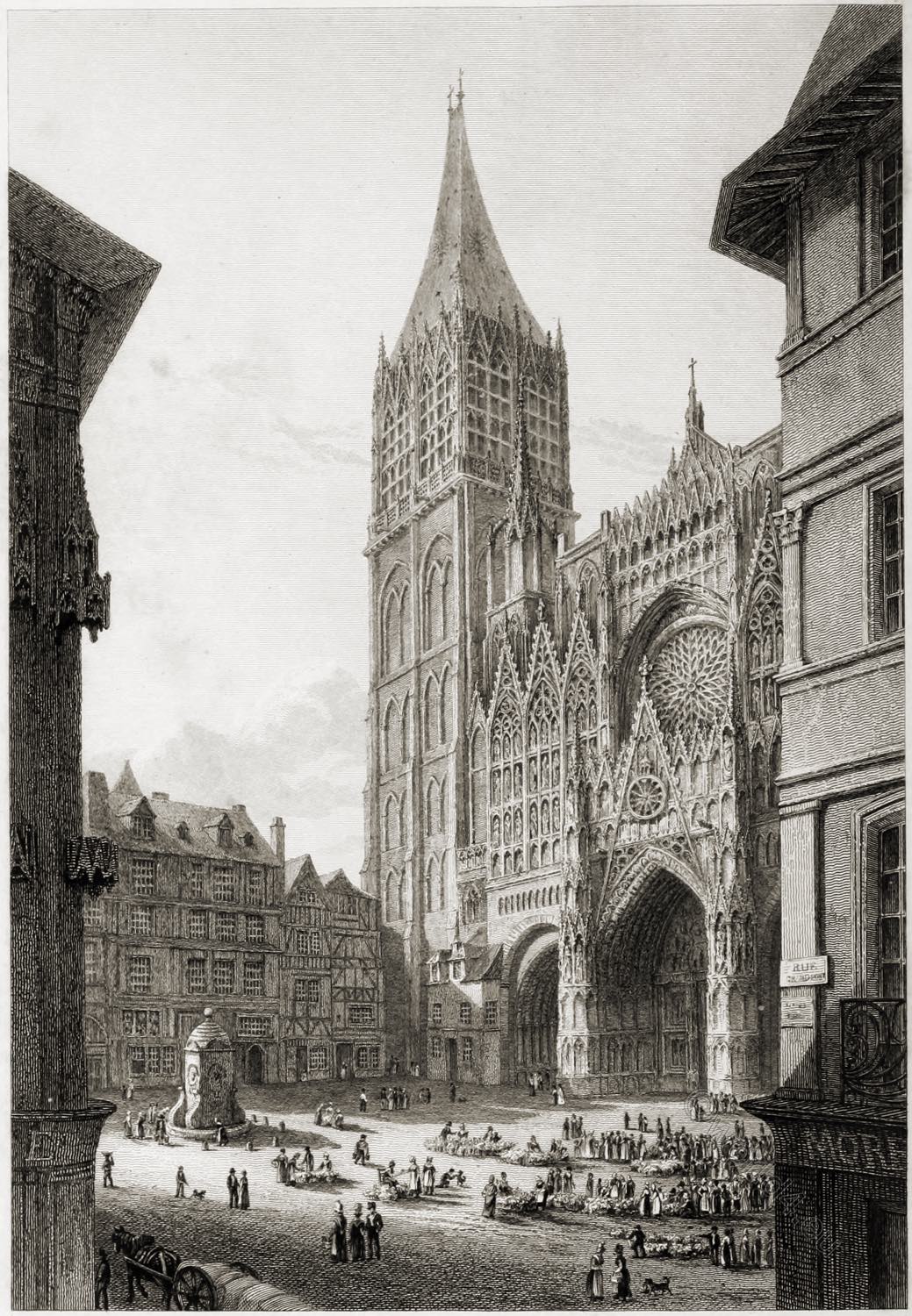FIGURES OF ECCLESIASTICS.
FROM THE SCULPTURES OF THE CATHEDRAL OF CHARTRES.
CHARTRES is one of the most ancient and interesting towns in France. Popular traditions carry the date of the foundation of the city back to the times of the deluge; and it has been pretended by some of the old antiquaries that its splendid cathedral stands on the site of an ancient Druidical temple.
The Cathedral of Chartres, founded in the earliest times of Christianity in the west, is remarkable for the many misfortunes it has sustained. M. Lejeune, the enlightened librarian of the city, has recently published a curious essay on this subject under the title, Des Sinistres de la Cathédrale de Chartres.
It appears, that in 770 the town and cathedral were entirely burnt to the ground. In 858, the Norman invaders, having made themselves masters of the place, massacred the inhabitants, and again reduced to ashes the town and cathedral. In 962 or 963, this town again suffered the miseries of war, having been taken by surprise by Richard Duke of Normandy, who equally burnt the church and city. On the 7th of September, 1020, the church was burnt a fourth time, having been struck, as it is supposed, by lightning.
Up to this time, the Cathedral of Chartres had been built principally of wood, which had rendered the effects of the fire more fatal. In 1028, Bishop Fulbert laid the foundation of the present edifice, but it required a large portion of three centuries to complete his design. The vast mass of statuary and sculpture with which it is adorned appears to be the work of the twelfth and thirteenth centuries.
The portals appear to have been executed in the earlier part of the twelfth century. After a period of nearly five centuries had passed since the disaster of 1020, in the July of 1506, the tower of the cathedral was struck by lightning, and the fire committed great ravages, but the most important and interesting parts of the building were happily saved.
In 1539, the tower was again fired by lightning. Another fire was caused in 1674 by the imprudence of one of the watchmen. The last, and one of the most deplorable of the modern disasters of the Cathedral of Chartres, was the great fire which was caused by accident, on the 4th of June, 1836, when some workmen were employed in the tower.
This calamity destroyed many important portions of the cathedral, but it spared some of the more ancient and ornamental parts. Among these not the least important are the interesting sculptures of the portals, which, beside their excellence as works of art, are extremely valuable as specimens of the costume, &c. of the period. It is from among these statues that we have taken the three figures of ecclesiastics represented on our plate; and the woodcuts below represent a portion of the Alb and of the Episcopal Shoes.
The first of these figures represents an archbishop, and is singular on account of the form given to the mitre, which bears a close resemblance to the tiara seen on the head of the pope in an illumination given by Gerbertus (De Cantu et Musica Sacra, torn. i. last plate). The archbishop is giving his blessing with his right hand, whilst in his other hand he holds the crosier, the greater part of which is destroyed.
The second figure is dressed as a deacon. He wears the dalmatic, with its large sleeves, which are not cut up the sides, but continuous. On his left arm he wears the maniple, sometimes called fanon. As it is his ministry to chaunt the gospel, he carries a beautifully bound evangelisterium in his hands. The two ends of the stole are seen under the dalmatic, and just over the alb.
The third figure is a mere priest, holding the book of the Gospels on his breast: he wears the chasuble, stole, and alb.
Source: Dresses and Decorations of the Middle Ages by Henry Shaw F.S.A. London William Pickering 1843.
Related
Discover more from World4 Costume Culture History
Subscribe to get the latest posts sent to your email.








